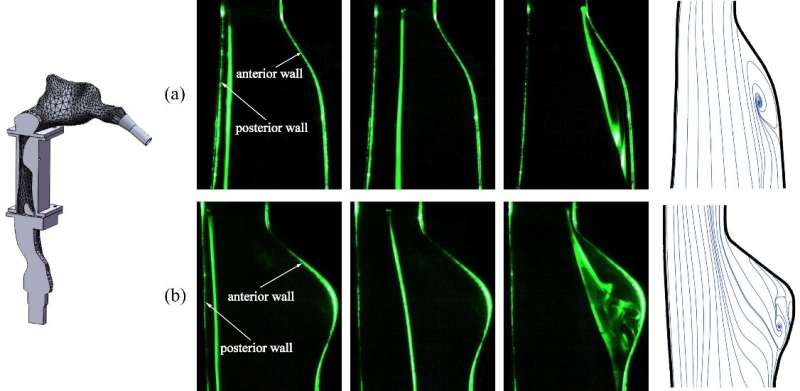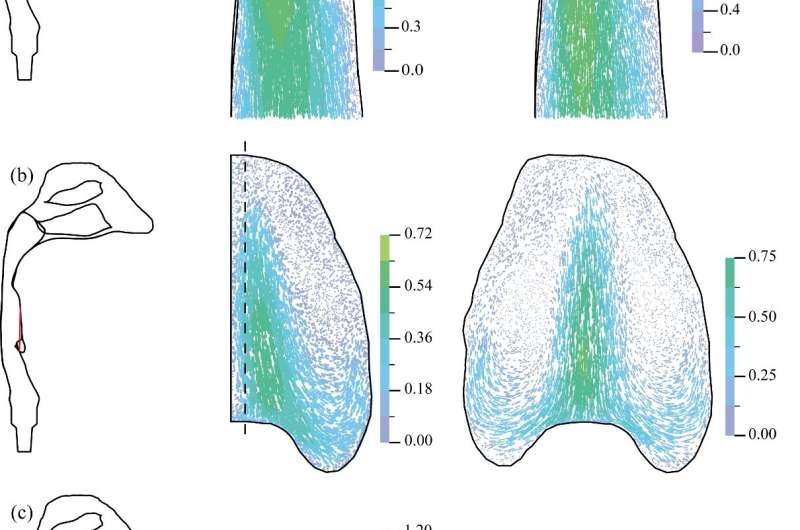The streamlines captured in the mid-sagital plane of (a) the mean-structure and (b) the individual structure half-side models. The last column is the numerical predictions. Credit: ©Science China Press
Researchers in the Capital Medical University, Beijing, China, have successfully developed a unique method to visualize streamlines of air directly in in-vitro models, and reveal the complex airflow behaviors in a normal pharyngeal airway.
The determination of airflow characteristics in the human upper airway is crucial in investigating obstructive sleep apnea, particle sedimentation, drug delivery and many biomedical problems. Computational simulations are increasingly used in upper airway-related studies. A precondition to choose a correct flow model to obtain credible predictions in numerical simulations is to know the airflow characteristics in the upper airway. However, direct visualization of air flow patterns in in-vitro models with complex geometrical structures is a challenge.
Professor Yaqi Huang's team in the Capital Medical University in Beijing, China, has developed a unique method and performed the first direct visualization of airflow in the in-vitro models based on realistic anatomical structures of the upper airway. The paper, titled "Direct visualizations of air flow in the human upper airway using in-vitro models," was published in Science China Life sciences recently.
The investigators constructed unique half-side transparent physical models of the upper airway for normal subjects (Figure 1). Using smoke wire to trace the airflow on the green laser sheet background in the physical models, they captured the streamlines in the mid-sagittal plane of the pharyngeal airway using a high-speed camera. The results revealed that the airflow through the pharynx in both the mean structure (Figure 1a) and the individual structure (Figure 1b) models was a laminar flow with vortexes but not a turbulent flow under normal inspiration. The flow field predicted numerically using the laminar model was consistent with the observations in the physical models.
From a comparison of the velocity fields predicted numerically using the half-side model (column 2 in Figure 2) and complete model (column 3 in Figure 2), the researchers found that the speed range and flow patterns in both models are quite similar except for the slow flow in the boundary layer region of the flat wall in the half-side model. This confirms that it is reasonable to investigate the flow behaviors in the upper airway using the half-side model. The effects of the upper airway narrowing on pharyngeal resistance are also simulated and analyzed using numerical models in this study.
Flow simulations in different pharyngeal locations using the half-side and complete mean-structure models. Credit: ©Science China Press
More information: Haijun Wu et al, Direct visualizations of air flow in the human upper airway using in-vitro models, Science China Life Sciences (2018). DOI: 10.1007/s11427-018-9373-y
Journal information: Science China Life Sciences
Provided by Science China Press






















